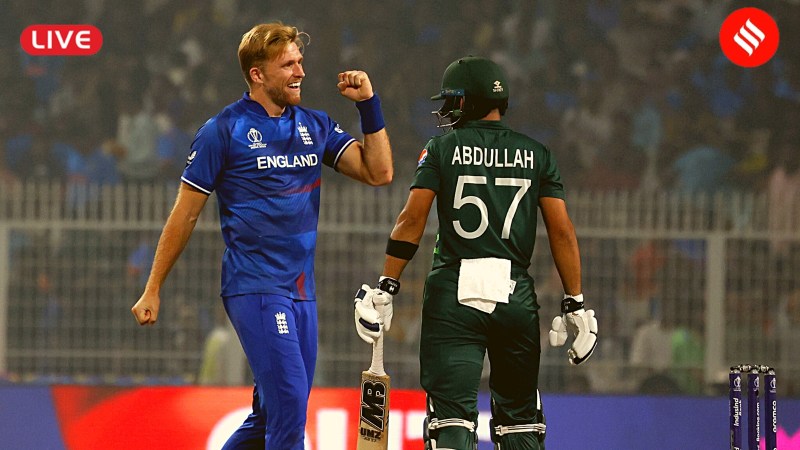
Live One Day Cricket
Live One Day Cricket – This article is about the international cricket format m. For Wom’s format see Wom’s One Day International.
One Day International (ODI) is limited overs cricket played between two teams of international status where each team is allotted a fixed number of overs, currently 50 and the game lasts up to 7 hours.
Live One Day Cricket

The Cricket World Cup, usually held every four years, is played in this format. One Day Internationals are also known as Limited Overs Internationals (LOIs), although this general term can also apply to Twty20 Internationals. They are mainstays and are considered the highest standard of the A-list.
Pakistan Cup 2023: Know Schedule And Watch Live Streaming In India
Matches are the number of matches played in the 12-24 months since the previous May, plus half of the previous 24 months. See point calculations for details.
The international one-day game is a development of the late 20th century. The first ODI was played on 5 January 1971 between Australia and England at the Melbourne Cricket Ground.
When the first three days of the third Test were cleared, the officials decided to abandon the match and instead play a one-day game of 40 overs with eight overs. Australia won the match by 5 wickets. ODIs were played in white kits with a red ball.
In the late 1970s, Kerry Packer created a rival cricket competition, the World Series, and it introduced many of the features of one-day international cricket that are common today, including colorful uniforms, matches played under white-ball floodlights at night, and dark screens for viewing. , and for TV broadcasts, multiple camera angles, microphones with effects to capture player sounds on the court and on-screen graphics. The first color kit matches were WSC Australians in gold gold coral pink against WSC West Indians played at Melbourne’s VFL Park on 17 January 1979. This not only led to Packer’s Channel 9 acquiring the television rights to cricket in Australia, but also led to the players being transferred the world was paid to play and became international professionals who no longer needed a job outside of cricket. Matches played with colored kits and the white ball became more common over time, and the use of white jerseys and the red ball in ODIs disappeared in 2001.
Ind Vs Pak, Asia Cup 2023 Super 4 Live: Kuldeep Takes 5 Wickets As India Crush Pakistan By 228 Runs In Colombo
International cricket’s governing body, the ICC, administers the ICC ODI rankings for teams (see table at right), batting, bowling and all-rounders.
Generally, the laws of cricket apply. But in ODIs each team bowls a fixed number of overs. While in the early days of ODI cricket the number of overs was usually 60 overs per side and matches were also played in 40, 45 or 55 overs, now it is uniformly fixed at 50 overs.
If several detours are lost, for example due to bad weather conditions, the total number of overpasses may be reduced. In the early days of ODI cricket, the team with the better run rate won (see average run rate method), but it favored the other team.

For the 1992 World Cup, an alternative method was used, which simply omitted the first team’s worst transfers (see Most Effective Transfers method), but favored the first team.
India Vs Netherlands Live: Odi World Cup Cricket Updates Today
Since the late 1990s, the target or score has typically been determined by the Duckworth-Lewis-Stern method (DLS, formerly known as the Duckworth-Lewis method).
Which is a method with a statistical approach. He takes into account the fact that wickets in hand play a vital role in the run rate and a team with more wickets in hand can play much more aggressively than a team with fewer wickets in hand. If there is insufficient play (usually 20 overs) for DLS to apply, the match will be declared a no score. Important one-day matches, especially in the latter stages of major tournaments, may have two days set aside so that if the first day is washed out, a result can be achieved on a “back-up day” – either by playing a new game or restarting a rain-stopped match.
Because the game uses a white ball instead of the red ball used in first-class cricket, the ball can change color as the innings progresses and is difficult to see, so the ICC uses different rules to keep the ball fit for play. Most correctly, the ICC will use two new balls (one from each point d), the same strategy used in the 1992 and 1996 World Cups, so that each ball will be used with only 25 balls.
Previously, in October 2007, the ICC allowed the replacement of the ball after the 34th over with a cleaned, previously used ball.
Ind Vs Nz Highlights, Odi World Cup 2023: Kohli Stars In Yet Another Chase, India Beat New Zealand By 4 Wickets
Prior to October 2007 (except for the 1992 and 1996 World Cups), only one ball was used during an ODI innings and the umpire decided whether to change the ball.
On the bowling side, there are pitch restrictions during ODIs to prevent teams from fielding fully protected pitches. Field limits determine the maximum number of fielders that can be outside the thirty yard circle.
The three power plays are designated P1, P2, and P3, respectively, and are usually shown near the score on modern scorecards.

Until 1992, only two outfielders were allowed outside the circle during the first fifteen, and five outfielders during the remaining overs.
India Vs. Australia Livestream: How To Watch 3rd Odi Cricket From Anywhere
It was shortened to t overs in 2005 and two five-over power plays were introduced, with the bowling team and the batting team having a say in the timing of each. In 2008, the punting team was given the discretion to call one of the two power plays. In 2011, teams could run any power plays between the 16th and 40th overs; previously power plays could take place anytime between the 11th and 50th overs. Powerplay bowling was finally abandoned in 2012 and the number of fielders allowed outside the 30-yard circle was reduced from five to four during non-powerplay overs.
The trial rules also introduce a substitution rule which allows a substitute player to be introduced at any stage of the game and until he is called up to play, he fills the role of the 12th player. Teams named their replacement player, named Supersub, before the draw. A supersub could bat, bowl, field or keep wicket after a player had been substituted; the substituted player assumed the role of 12th man. During the six months it was in use, it became very clear that the Supersub was much better suited to the side winning the toss, throwing the game off balance. Several international captains reached “gentleman agreements” in late 2005 to end this rule. They continued to name the Supersubs but didn’t release them, just using them as a regular 12th man. On 15 February 2006, the ICC announced its intention to end the Supersub rule on 21 March 2006. Two balls were tried in ODIs over two years, but were rejected.
The International Cricket Council (ICC) determines which teams have ODI status (meaning that any match between two such teams under normal one-day rules is classified as an ODI).
This section does not cite any sources. Please help improve this section by adding citations to reliable sources. Unsourced material may be challenged and removed. (January 2020) (help to remove template)
Sri Lanka Odi World Cup 2023 Schedule And Squad: Date, Match Time, Team List & Live Streaming Details
Twelve test nations (which are also twelve full members of the ICC) have permanent ODI status. The countries are listed below, along with the date of each country’s ODI debut after gaining full ODI status, shown in brackets (Sri Lanka, Zimbabwe, Bangladesh, Ireland and Afghanistan were associate members of the ICC at the time of their ODI debut):
Between 2005 and 2017, the ICC granted provisional ODI status to six other teams (known as associate members). In 2017, this was changed to four teams following the promotion of Afghanistan and Ireland to Test status (and permanent ODI status). The ICC had earlier decided to limit ODI status to 16 teams.
Teams earn this provisional status for four years based on their performance in the ICC World Cup Qualifying Tournament, the final event of the ICC World Cricket League. In 2019, the ICC increased the number of teams with provisional ODI status to eight. The following eight teams currently hold this status (dates listed in brackets are their first ODI match after receiving initial ODI status):

In addition, eight teams have previously held this temporary ODI status before being promoted to Test status or relegated after poor performances in World Cup qualifiers:
India Vs Australia Live Streaming: India Vs Australia 3rd Odi: Crucial Match To Take Place Today; Check Live Streaming, Squads, And Other Details Here
Sometimes the ICC gives associate members permanent ODI status without giving them full membership and Test status. It was originally introduced to allow senior members to gain regular experience in international organizations before becoming full members. Bangladesh and Kia were the first to receive this status. Since then, Bangladesh has taken a step towards Test status and full membership; but due to controversy and poor performances, Kya’s ODI status was downgraded to provisional in 2005, meaning he had to perform well in the World Cup qualifiers.
One day cricket schedule, cricket one day rankings, watch one day cricket match live, england cricket one day shirt, cricket live one day, one day cricket score live, one day cricket match, to day live cricket, one day cricket, live cricket one day match, one day cricket rank, one day international cricket




